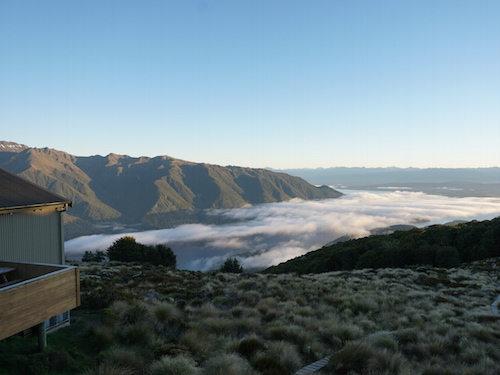I love dinner times on a multi-day hike in the backcountry. Any hot food tastes absolutely divine after a full day tramping on the trails – just focusing non-stop on placing one foot ahead of the other with a 7kg backpack on the shoulders. Along the way, the stunning vistas had tugged at our heartstrings and recharged our souls, so it was now time for the body to rest and refuel.
“How’s your day been?” we overheard an enthusiastic hiker in the shared kitchen area striking up a conversation.
“Good but… I guess it’s not too different from yours?!”
I looked at KT and we silently chuckled at the honest response. Everyone in the hut would have had fairly similar itineraries for the day. Most of us had hiked up the steep 13.8 km from the car park in Te Anau and had our breaths taken away upon emerging from the treeline, which opened up to expansive views of the surrounding mountains, before arriving at Luxmore Hut perched near the end of the ridgeline. The demographic make-up of the groups in the hut, however, couldn’t have been more varied.
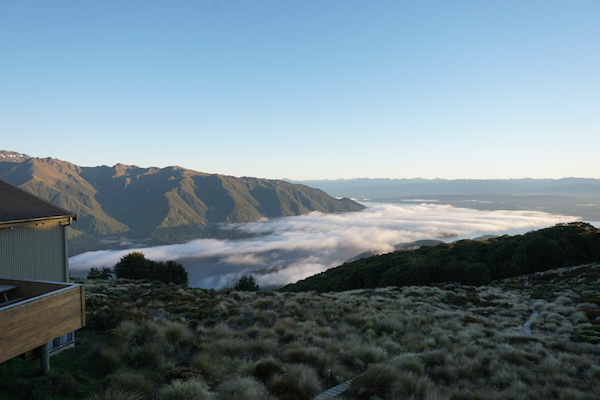

English dominated the chaotic chatter in the kitchen – varying from American to British to Kiwi to Singlish (from us, of course) accents – as well as Mandarin Chinese coming from a boisterous group of young families, although when we listened closely there’d be hints of French, Hebrew and one of the Scandinavian languages amongst us. Looking around, the dinner menus of each group were equally diverse.
The clear favourites were Back Country Cuisine’s freeze dried meals, packed in their iconic green foil pouches cleverly designed for hungry hikers to simply add boiling water and convert into a bowl to scoop from thereafter. The Invercargill-based brand has become synonymous with camping in NZ and is often placed prominently in local outdoor stores – and even in the mainstream supermarket of Te Anau, where the footfalls were mostly made up of travellers here for some adventure. This was the multiplier effect in action, whereby the benefits of a booming tourism industry extend far beyond just tour operators and local restaurants.
Then, there would usually be the one or two hikers who had brought along instant noodles to sustain them across the few days. This time, I spotted an even more sorry looking pair who was dipping crackers in what looked like diluted Campbell soup. Their situation was made to look even more miserable when compared to the next table, who had gone the distance – with a mega pot of spaghetti bolognese and a bottle of red (complete with wine glasses!) on a table laid out with a festive table cloth (or more like a flimsy piece of plastic sheet with colourful prints, but still…) Afterall, it was Christmas Eve and even out here where we’re stripped to the bare necessities and forced to carry everything we needed on our backs, people could still afford these little luxuries in order to have an abundance of fun.
We found an empty spot at a table right opposite a solo hiker and started chatting over our humble meal. In case you’re wondering, we had Camembert as our appetiser, quinoa cooked with canned tuna and spinach/tomatoes for mains and dark chocolate for dessert. Not too shabby!
It wasn’t too difficult striking up a conversation with the Brit sitting across us. Andrew had been wearing a shirt with the words “100 mile race”, so it didn’t take long for us to launch into a passionate discussion about trail running and ultra races, including how we all agreed that Hong Kong was pretty impressive for such a condensed city, with plenty of easy access to so many oft-the-beaten tracks. For some reason, westerners liked to mention past Asian countries they’ve visited before, an attempt – I suspect – to build affinity with us.
Given the nature of our activity – that is, a Great Walk in the mountains stretching across four days – there was already a natural self-selection in place for the profiles of the people we met. When a group of Kiwis from Cromwell talked about how it had been a pretty bad year for growers and elaborated on methods to prevent crops from freezing over – such as planned fires that create smoke wisps to keep the air moving and helicopters patrolling the land to leave behind a constant breeze – these had been fascinating enough narratives for us city dwellers. Yet, the real rapport started to be built at the point where Craig found out that KT and I took an interest in mountain biking.
“No no… we’re just beginners, really. Our bikes are hardtail,” I quickly jumped in to clarify on our abilities and ambitions, sharing that our bikes are front-suspension only, nothing hardcore. Craig’s eyes had instantly lit up at his topic of interest and launched into a series of mountain biking stories – from how he had once competed in the MTB World Championships held in New Zealand to come in top 30 in the Masters (aged 50-59) category, to his favourite trails in Wanaka, to how the advancement of electric bikes’ technology had helped level the playing field between him and his wife, allowing them both to explore a wider variety of tracks together today (super sweet!).
We admitted that this was an entirely new world from the one we grew up in back home. With that, Glenise – another fellow Cromweller from the group – started opening up about how she had also moved to the South Island from Auckland city just a few years ago and fell in love with the incredible landscapes here, generously listing out her favourite tramps before extending an invitation to stay at her lakefront home.
“Yes, we’ll definitely visit Cromwell the next time we’re here!”
Tempted as we were to exercise the offer right after our Great Walk, we had already booked our accommodation for the rest of this trip. I made a mental note to leave room for such spontaneity in future – although really, you never know.
After sharing a remote track and sleeping in the same huts for 3-4 days, we started to recognise the same old faces on the trails. Throughout the day, we would take turns to overtake each other, dispensing some encouragement whenever passing someone else who had stopped for a break. Sometimes, we ended up hiking together momentarily, seizing the opportunity to find out more about each other, which helps to break the monotony.
Eric and Molly, the Americans, had been the closest to us in terms of age group (the ones mentioned previously were all above 50 but – ironically – much fitter than us!) This young couple had moved from Colorado to Christchurch a year back, motivated by their love for the great outdoors, and as we exchanged stories along the way, we discovered that our interests overlapped in more ways than one.
For starters, they too were ardent fans of icebreaker. And we could definitely relate to the similar challenges of settling into a new country far away from home. We shared about our recent experience volunteering here in New Zealand for IRONMAN 70.3 Taupo, which set the stage for them to follow up with stories of their participation as race volunteers in the Hardrock 100 in Colorado.
“There was this one year, we saw Anna Frost lying on the floor at the 20+ mile point, proclaiming she couldn’t go on anymore.”
“Oh Anna Frost, the ultra-runner from New Zealand. She’s an Icebreaker ambassador!”
“Yeah, she was sooo strong-willed. After that incident of her collapse, she got up, continued and I was shocked to find out that she eventually won the 100-mile race.”
“Wasn’t Hardrock 100 the race that Kilian Jornet won with his arm in a sling after dislocating his shoulder mid-race?”
“Yes. Kilian Jornet is such an amazing guy! He has absolutely no airs in person – unlike many others – and runs by himself without demanding for a big support crew – unlike many others!”
And we all pause in silence as we ponder over these legends in awe, nodding with approval.
Of course, not every conversation on the trail flows so naturally. There were two Israeli girls who kept to themselves and appeared slightly aloof on first impression, but I finally mustered enough courage to chat them up in order to gather some tips for my upcoming trip to Jerusalem.
Immediately, the girls opened up, telling me enthusiastically how I absolutely needed to try Israeli hummus with tahini, because it is unlike anywhere else’s in the world. They had just finished their four years serving the army – compulsory for both men and women in Israel – and were taking a break before going back to work. We discussed about the effectiveness of their famous Iron Dome, touched briefly on the Palestinian-Israeli conflict before comparing the similarities between their country and mine. I’m definitely glad I broke the ice and was reaffirmed on never to judge a book by its cover.
Besides the hikers, our rangers from all three huts were packed with personality. Each of them had their own passion points and special programmes. Pat led a nature walk around the hut, Janine made us sing a song she wrote about Fiordland’s wildlife and Phil took us through a 45min lecture on the history of Lake Manapouri, where we had been swimming in a few hours ago. There was some serious, friendly rivalry going on amongst the rangers!
“I unfriended them on Facebook but they kept coming back” Pat had dryly commented on his love-hate relationship with the kea that visited the Luxmore Hut. Kea are the world’s only alpine parrots – also known as “clown of the mountains” – and are super smart and playful with an intelligence (and destructiveness) comparable to that of a 4-year-old child. The one spotted at our hut was cheekily pushing everything off the ledge with its beak – from hiking poles to water bottles to cooking pots!
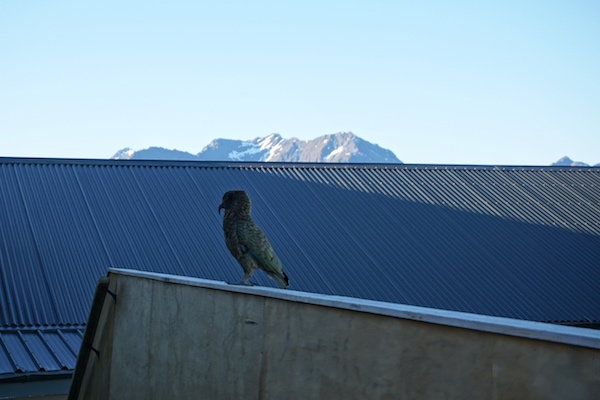
At Moturau Hut, we learnt from Phil that Lake Manapouri was considered to be New Zealand’s first great conservation success story. In the 1950s, the government had planned to raise lake levels to as much as 30 metres, in order to generate extra power for a hydroelectric station meant to fuel an aluminum smelter. This would mean flooding the shorelines of the lake and causing many of its pristine islands to disappear completely. The flora and fauna of this beloved national park would have been irretrievably damage. ‘Save Manapouri’ became New Zealand’s first major nation-wide conservation campaign, as hundreds of thousands of Kiwis protested and signed petitions to protect Lake Manapouri. In the end, the value of New Zealand’s natural heritage triumphed that of economic progress and the movement became symbolic of the country’s strong stance on environmental conservation.
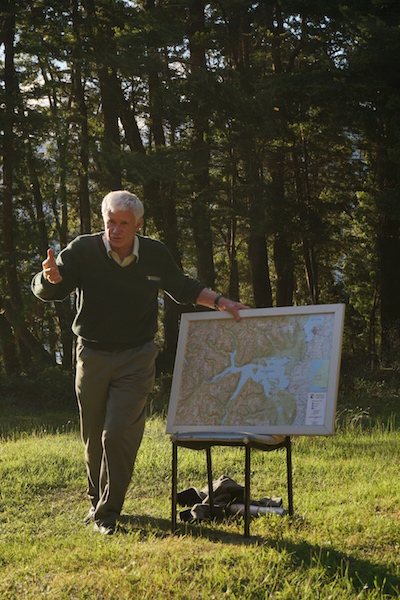
Even today, New Zealand is still struggling to recover from some of its earlier human interventions of the environment. A classic case is the introduction of possums (for fur trade) and stoats (to control the rabbit population – also introduced by, sigh, European settlers for food and game). With a lack of natural predators and an abundance of defenseless ground-nesting and flightless native birds, both species flourished and have been known to attack the nests of kiwis and keas, causing drastic declines in New Zealand’s bird populations.
To curb these tiny terminators, the Department of Conservation (DOC) lines national parks with stoat traps that sometimes use hen eggs as baits. However, this method’s effectiveness have been questioned – and in a bid to step up on their pest control efforts, the DOC also aerially drops 1080, a type of poison, at targeted sites where endangered native species are under threat. It’s apparently proved to be effective, but remains a contentious issue as environmentalists and animal rights activists argue its cruelty (death by 1080 is reported to be slow and painful), risk of killing non-targeted animal species (such as keas, deer and dogs) as well as the potential harmful effects on New Zealand’s water, food chain and environment.
In this continuous battle to reverse the damage wrecked on the delicate local eco-system, Lake Manapouri has proved to be a beacon of light. Its largest island, Pomona Island, has become a predator-free sanctuary, where the critically endangered kiwis are released to thrive and grow. As we sat behind the shorelines of Lake Manapouri listening to our ranger Phil’s passionate lecture about its history, I couldn’t help but judge humanity’s misguided attempts and hubris in believing we could play God – yet at the same time, marvel at the same humanity’s relentless efforts in reversing our predecessors’ damage and restoring nature to its original state.
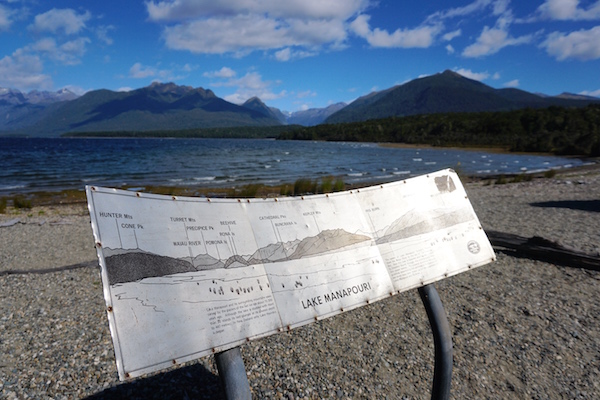
The next morning, we set off from Moturau Hut and walked along Lake Manapouri to finish up our fourth and final day on the Kepler Track. When we finally arrived at the end of the 60km loop, our legs were heavy and our backs sore, but our spirits lifted and our minds emptied of the trivial worries we had carried along at the start, replaced by newfound knowledge and fresh ways of seeing the world.
